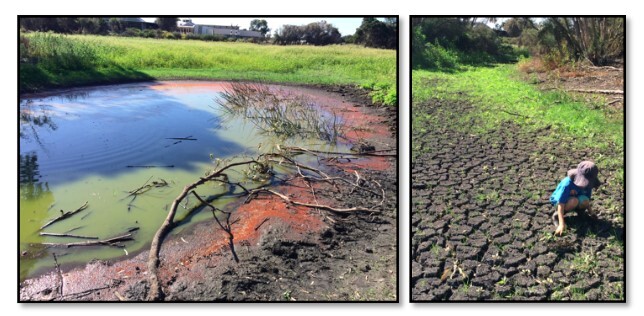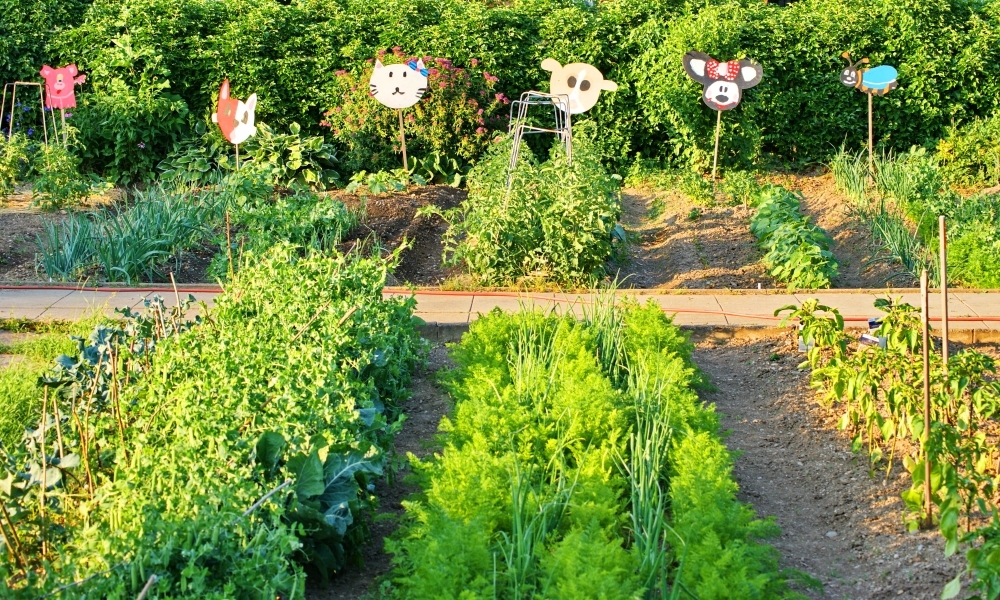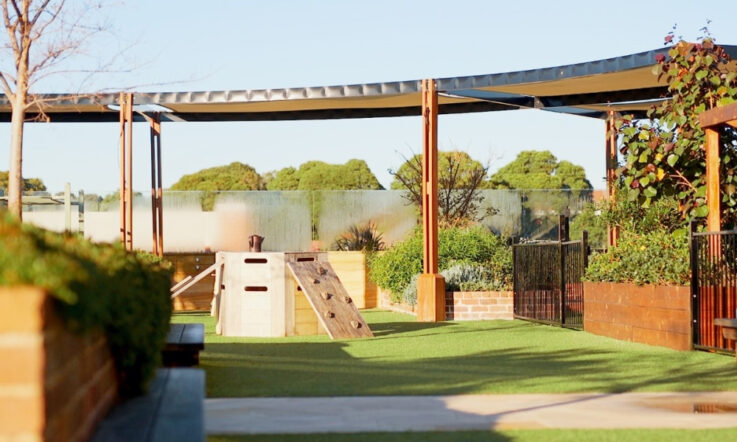Developing an understanding of the importance of living more sustainably and possessing an awareness of the interconnectedness of our world is no doubt the greatest educational challenge of our time. Yet the solutions need not be as challenging as we fear and could indeed be much simpler than we think.
More than ever, school gardens remain a place that continue to nourish school staff, students and the wider community. Across Australia edible gardens are flourishing in schools, community sites, homes and on balconies and window sills. Pots, terrariums, jars of sprouting seeds and mushroom farms are popping up in schools that cannot cultivate in their grounds. Yet it is evident that more than school gardens are needed to cultivate the awareness of sustainability and to inspire optimism, care and action.
In our research (Bosevska & Kriewaldt, 2020), we set out to delve into how a culture of sustainability could make a difference – to children, the school community and ultimately to our planet. Specifically, what can we learn from one school that is showing the way in supporting sustainability education using a whole-school approach throughout its entire systems and operations?
A whole-school approach – four ‘lighthouse practices’
Sustainability education demands a whole-school approach and innovative teaching and learning. The curriculum operates as just one actor within a complex, multipronged system. One has to look beyond the formal learning instruction and into the networks of school operations that influence student outcomes as a whole. By presenting the story of one school’s ongoing journey towards sustainable education (SE) (Sterling, 2001), four ‘lighthouse practices’ emerge that can guide school communities everywhere to help strengthen their approach to sustainability.
1. Collaboratively build a unified school vision of sustainability
Educating for a Sustainable Future (EfSF) is a core feature of the school’s ethos, which guides and initiates the development of the value structure of the school. Developing a model of an aspired-to system of SE enabled the school to close the gap between what they felt education should be and do with what actually took place.
The original vision over 30 years ago was to create a place of education where young people would be given the opportunity to understand and value the wisdom of living and working sustainably. The question was not one of why but how. In 2002, the school’s leaders set out to reorient their school towards EfSF by asking staff to audit their entire curriculum from the Early Learning Centre (ELC) through to Year 10 and to identify how their courses contributed to their students’ understanding of sustainability. In essence they asked: If your program doesn’t contribute to sustainability, then why are you teaching it?
A critical foundation for achieving SE is establishing and sustaining the transformation of a school culture that values sustainability. The school’s motto – Make A Difference – forms an integral part of their culture and strongly influences the teaching and learning approaches adopted across the entire school. This message signifies more than just a motto as students are strongly encouraged to make a difference in their community and the world in which they live in and is a driving force behind many events and activities undertaken at the school.
The key is, as the founding principal emphasised ‘kids have to believe that they can make a difference if this is going to work’. The school has cultivated their students’ understanding, visions and actions, as we witnessed from graduating senior students who voiced:
‘... a sustainable future for us all requires more than numbers on a certificate, it requires compassionate, engaged, curious and kind hearted people who will act on the basis of our common humanity. We know that to be truly successful is to make a difference.’ (Year 12 student).
This student’s voice captures the raw sentiments behind what it means for students to be part of such a school community. All the groups that make up the school community play a vital role in co-creating and sustaining the goals of EfSF. A shared perspective and a cohesive vision is at the heart of effective schools.
2. Embed sustainability into school policies
In order for sustainability education to endure over time within a school community, it is vital to secure collaborative and mutual agreements between staff, students, parents and the wider community. More importantly, to ensure these agreements are embedded, explicit, clear and visible within school policies. The power and role of school policy cannot be underestimated: teachers leave the school and programs can, and often do, fall apart. Shared responsibility helps to ensure the longevity of a whole-school approach. In other words, policies outlast teachers.
In the school’s Strategic Plan, the educational philosophies were used as the basis and framework for its development. The school’s policies draw clear focus to the development of the school based around its five core educational and philosophical tenets and objectives: these explicitly include their Sustainable Thinking Dispositions Framework and a strong focus on sustainability and making a difference. The school asserts the need for developing policies in collaboration with colleagues and the wider community: the principal highlighted the critical role that the school council played in supporting their sustainability efforts by recognising it as part of the strategic plan for the school.
3. Foster outdoor, place-based and inquiry-based teaching and learning
This school demonstrated how opportunities for spontaneous outings and conversations form the building blocks for sustainability education among students. Preschool children take immersive weekly walks, learning in and with nature. During one of these walks they wonder about the changes in a nearby lake – a bright, red film has developed around the edges of where the water body meets the cracked earth:

‘It’s a red, lava lake,’ April says.
Somewhat disbelieving, Lily asks: ‘Do you know what the red stuff is?’
‘It’s lava,’ repeats April.
Lily offers her own explanation: ‘I think it’s polluted. That means there’s something in the water that shouldn’t be there.’
Sam adds: ‘Pollution actually means it’s covered with algae.’
Kate exclaims: ‘Look, there’s rubbish in there!’
Zoe quickly adds the pieces: ‘The rubbish made it get polluted.’
‘No, when it’s not raining the water turns this colour,’ explains John.
These weekly walks extend into the primary years program, deepening students’ understanding of Indigenous cultures, values and relationship to Country. Learning through doing – sowing, planting, mulching, watering, weeding, harvesting and composting – in a productive food garden is a favourite part of their week, as well as preparing and eating vibrant produce. Schools are increasingly recognising that embedding food garden activities into the curriculum is leading to powerful sustainability learning opportunities. It is a hands-on way to learn about cycles and systems – and it is a tangible metaphor for a rich life deeply connecting us to the planet’s seasonal ‘heartbeat’.
The emphasis on sustainability and environment created another link between the ELC and the secondary years. Teachers wanted continuity through the school of the concept of ‘environment as third teacher’ and their increasing awareness of the importance of the physical environment. The school community (school council, parents, students and teachers) decided that the new teaching areas should model sustainable building practices and support collaborative learning.
A suite of sustainability education core subjects is offered within the secondary years, from a ‘Global Sustainability Program’ to ‘Language and Cultural Sustainability’. They also dedicate multiple elective subjects including ‘Outdoor and Environmental Studies’, ‘Outdoor and Adventure Leadership’ and ‘Sustainable Land Management’ to their curriculum, which continue to embrace their school grounds and surroundings. The breadth and depth of offerings create unique courses and opportunities centered on sustainable living and learning and also build wider community links between places and people.
4. Develop a whole-school curriculum design
This school recognises that their curriculum is the primary means for transmitting the school’s values and for putting those beliefs into daily practice. The school’s curriculum design has been purposefully created to reflect their educational philosophies and values that aim to work towards meeting the responsibilities and goals of SE.
Innovative multidisciplinary teaching teams, coupled with concept-driven, student-centered and inquiry-based programs are used to connect the ELC through to the senior years. We attribute the successful integration of the school curriculum and programs as a result of establishing ‘teaching teams’, where faculties were disbanded and replaced by multidisciplinary teams of teachers working together. While the implementation of this curriculum design varies across the stages of schooling, there is one constant: every teacher will ask the following question of their curriculum planning: ‘Is this helping young people to make a difference for a sustainable future?’ The answer, of course, has to be ‘yes’.
The Sustainable Thinking Dispositions Framework guides the school’s curricular and co-curricular programs. They came up with the notion of having a whole-school curriculum where, when a teacher plans a unit of inquiry for students, they actually decide which of the dimensions of sustainability they’re focusing on:
...we felt that by building it in at the grassroots level and saying to every teacher “you have to in your planning indicate what dimension of sustainability you’re focusing on” meant that it was being taught by everybody, in every subject.’ (Founding principal)
Final thoughts
Within the research school, along with many others, we see significant progress being made towards SE. However, redirecting education towards sustainability as a whole remains a serious challenge.
The overarching aim must shift from a focus on education and school reform towards recontextualising the whole vision of education: schools and communities working together to shape the meaning of a sustainable future. This in turn will create the pathways that schools and teachers need to become the facilitators and creators of their own materials grounded in the idea of sustainable education.
References
Bosevska, J., & Kriewaldt, J. (2020). Fostering a whole-school approach to sustainability: Learning from one school’s journey towards sustainable education. International Research in Geographical and Environmental Education, 29 (1), 55-73. https://doi.org/10.1080/10382046.2019.1661127
Sterling, S. (2001). Sustainable Education: Re-Visioning Learning and Change. Green Books. The Schumacher Society, UK.
This article shares how one school developed its vision of sustainability education. Thinking about your own school community and context, what would your sustainability vision be?
The authors note: ‘The power and role of school policy cannot be underestimated: teachers leave the school and programs can, and often do, fall apart.’
As a school leader, how do you ensure the longevity of priority programs? Think about a whole-school program you currently have in place: Is it included in your strategic planning? What would happen if a key teacher associated with the program were to leave?



